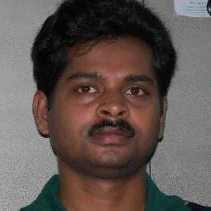
Kaushik Roy
Work place: Dept. of Computer Science, West Bengal State University, Kolkata - 700126, WB, India
E-mail: kaushik.mrg@gmail.com
Website:
Research Interests: Medical Image Computing, Image Processing, Image Manipulation, Image Compression, Pattern Recognition, Medical Informatics
Biography
Dr. Kaushik Roy, B.E., M.E., Ph.D., is currently working as an Associate Professor and Head in the Dept. of Computer Science at West Bengal State University, Barasat, India. He has published more that 70 research papers/book chapters in reputed conferences and journals. His research interest includes Pattern Recognition, Document Image Processing, Medical Image Analysis etc.
Author Articles
Establishment of Automated Technique of FHR Baseline and Variability Detection Using CTG: Statistical Comparison with Expert’s Analysis
By Sahana Das Kaushik Roy Chanchal K. Saha
DOI: https://doi.org/10.5815/ijieeb.2019.01.04, Pub. Date: 8 Jan. 2019
The most widely accepted method of monitoring the fetal heart rate and uterine activity of the mother is using Cardiotocograph (CTG). It simultaneously captures these two signals and correlate them to find the status of the fetus. This method is preferred by obstetricians since it is non-invasive as well as cost-effective. Though used widely, the specificity and predictive precision has not been undisputable. The main reason behind this is due to the contradiction in clinicians opinions. The two main components of CTG are Baseline and Variability which provide a thorough idea about the state of the fetal-health when CTG signals are inspected visually. These parameters are indicative of the oxygen saturation level in the fetal blood. Automated detection and analysis of these parameters is necessary for early and accurate detection of hypoxia, thus avoiding further compromise. Results of the proposed algorithm were compared with the visual assessment performed by three clinicians in this field using various statistical techniques like Confidence Interval (CI), paired sample t-test and Bland-Altman plot. The agreement between the proposed method and the clinicians’ evaluation is strong.
[...] Read more.Convolution Based Technique for Indic Script Identification from Handwritten Document Images
By Sk Md Obaidullah Nibaran Das Kaushik Roy
DOI: https://doi.org/10.5815/ijigsp.2015.05.06, Pub. Date: 8 Apr. 2015
Determination of script type of document image is a complex real life problem for a multi-script country like India, where 23 official languages (including English) are present and 13 different scripts are used to write them. Including English and Roman those count become 23 and 13 respectively. The problem becomes more challenging when handwritten documents are considered. In this paper an approach for identifying the script type of handwritten document images written by any one of the Bangla, Devnagari, Roman and Urdu script is proposed. Two convolution based techniques, namely Gabor filter and Morphological reconstruction are combined and a feature vector of 20 dimensions is constructed. Due to unavailability of a standard data set, a corpus of 157 document images with an almost equal ratio of four types of script is prepared. During classification the dataset is divided into 2:1 ratio. An average identification accuracy rate of 94.4% is obtained on the test set. The average Bi-script and Tri-script identification accuracy rate was found to be 98.2% and 97.5% respectively. Statistical performance analysis is done using different well known classifiers.
[...] Read more.Other Articles
Subscribe to receive issue release notifications and newsletters from MECS Press journals